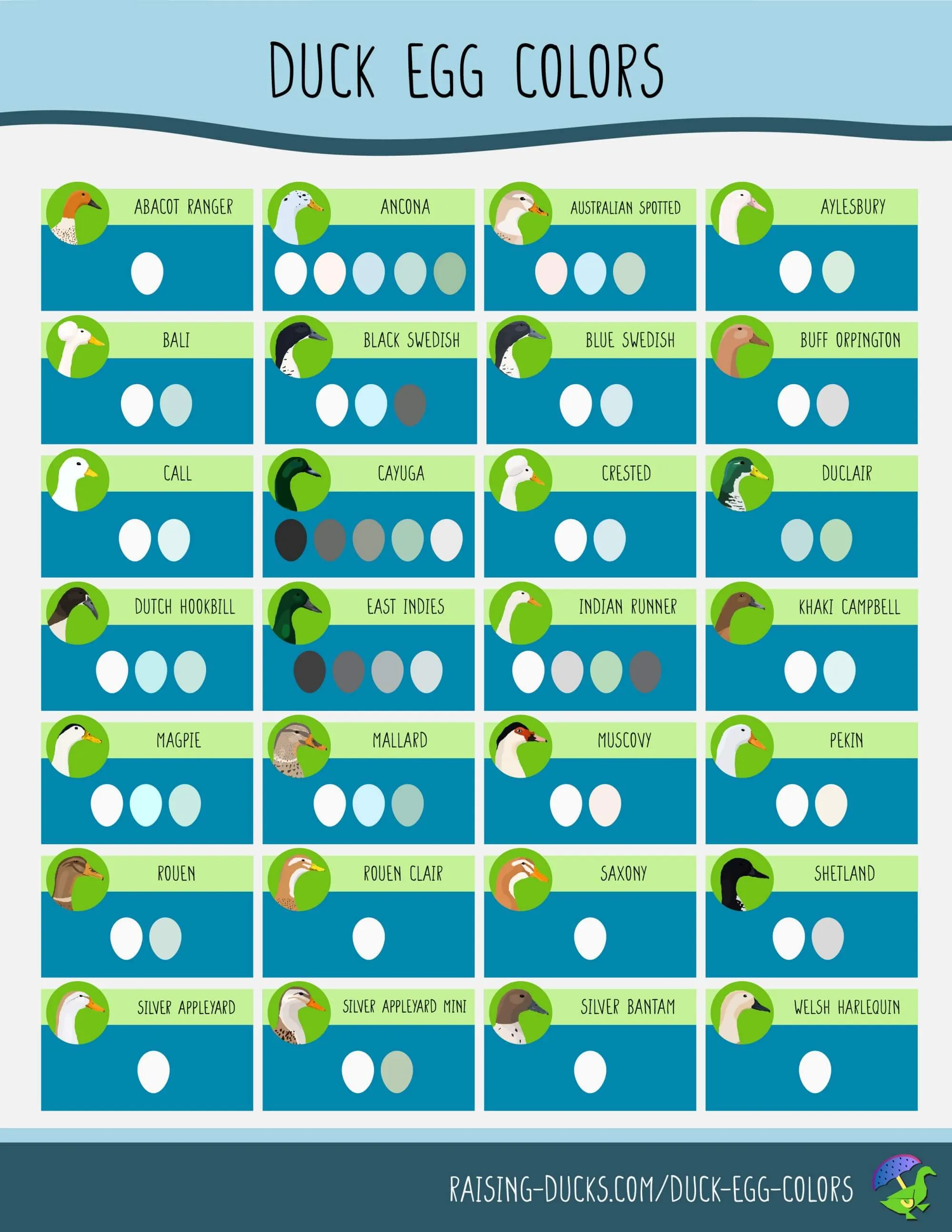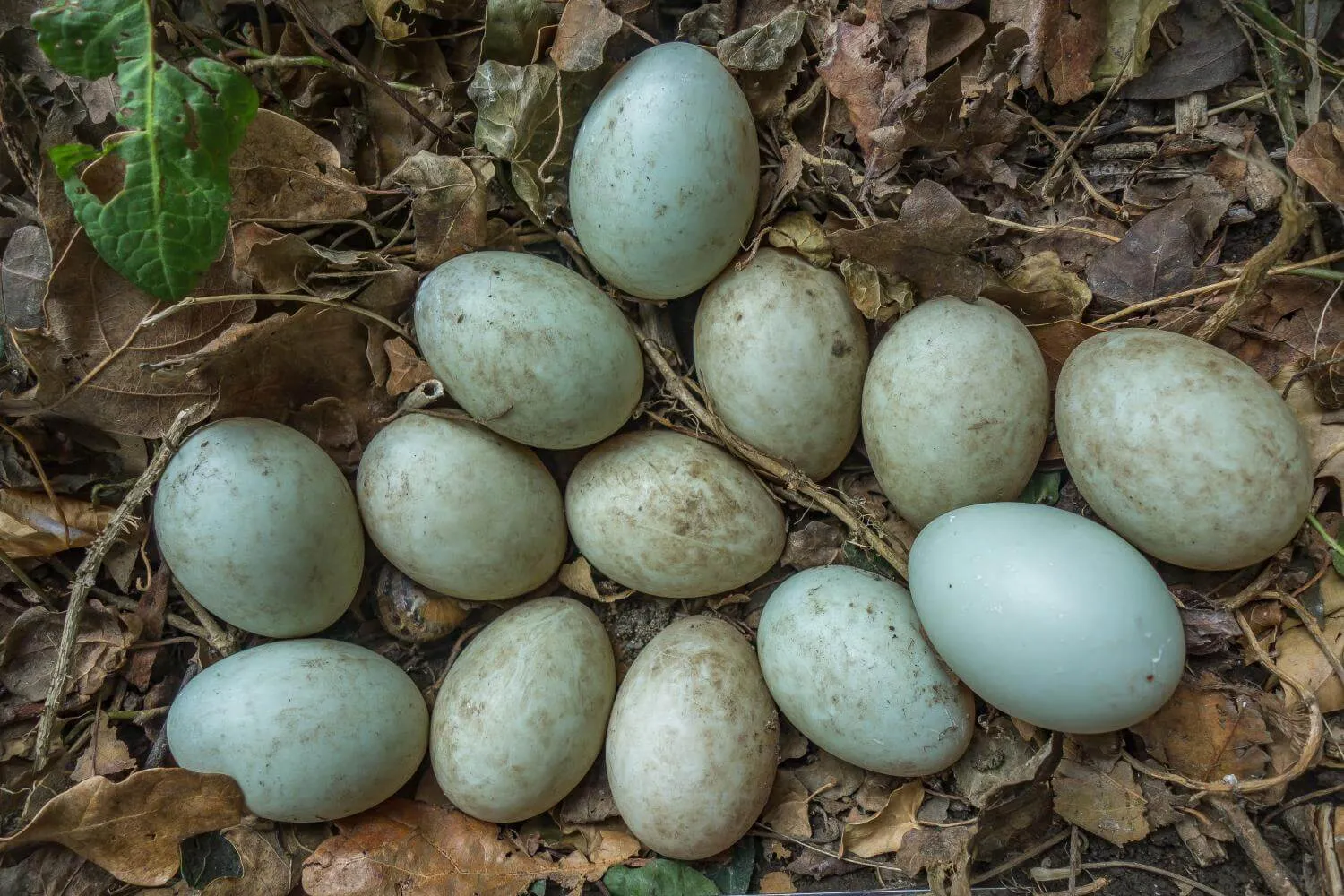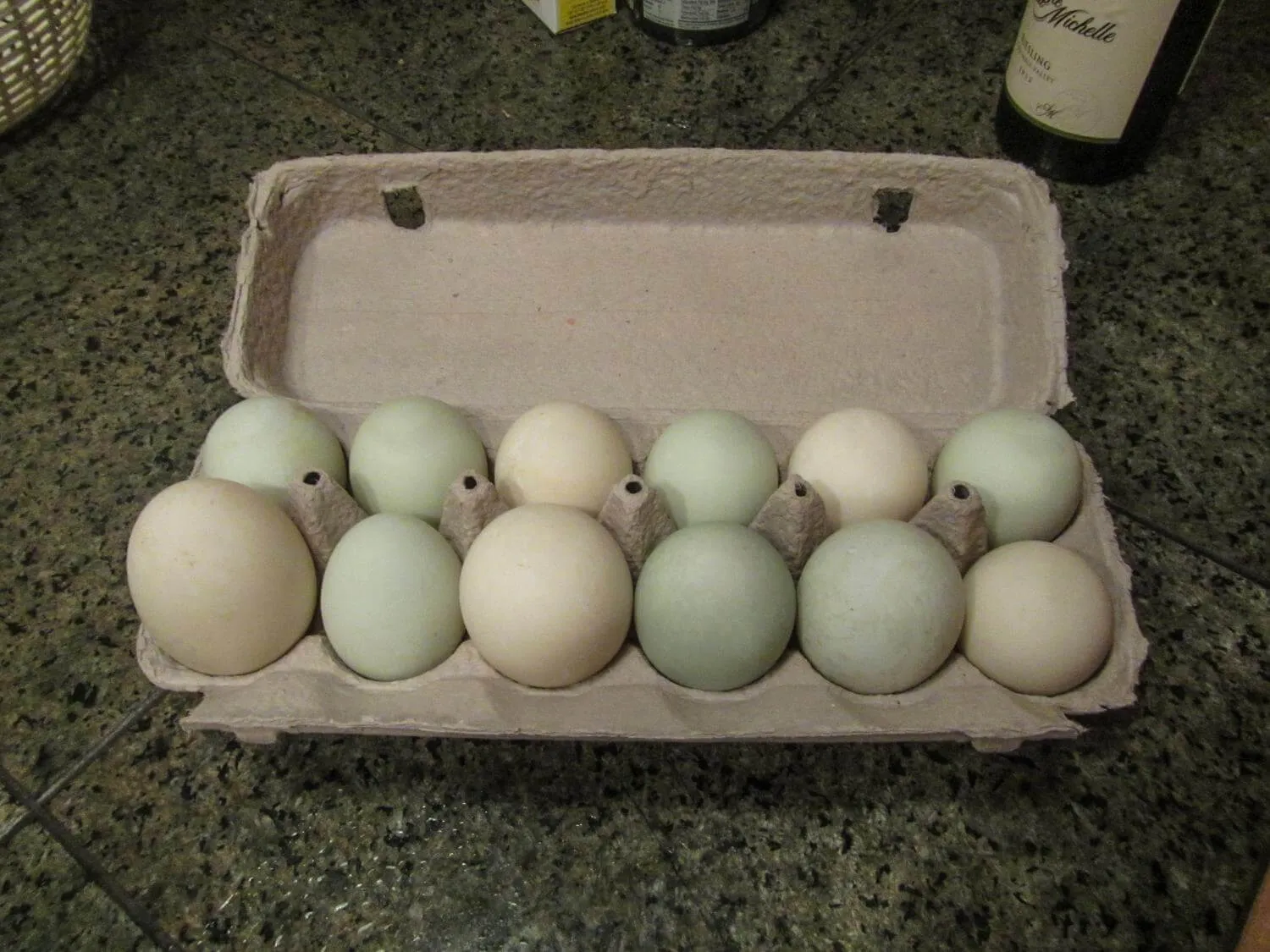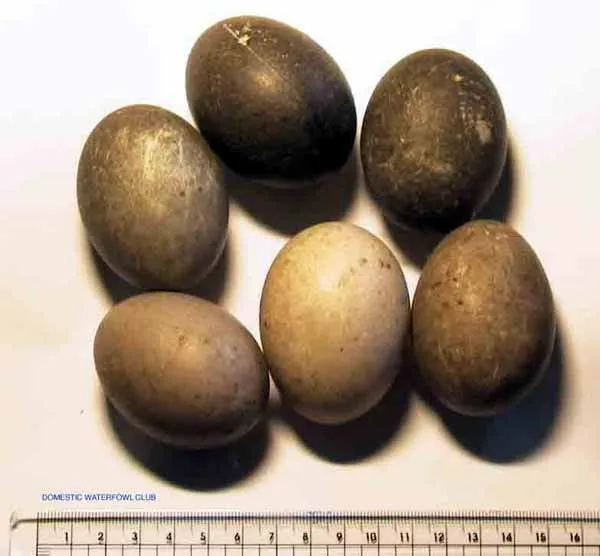Did you know “duck egg blue” is a real thing? Did you know Cayuga ducks can lay black eggs?
Just like chickens, some ducks can lay beautiful colored eggs. Ducks primarily lay eggs in two colors: white, or blue to green. Think pale periwinkle blue to a light sage green or anywhere in between. A few duck breeds can even lay black or charcoal gray eggs.
Featured image credit: “Blue Duck Eggs” (CC BY-NC-SA 2.0) by jdcb42

How duck egg colors work

Blue-green eggs from a wild duck.
Egg color is determined by genetics, not diet or anything else. Egg color has no effect on the quality of the egg—all eggs are the same inside, regardless of shell color.
Wild Mallards lay light green eggs. Hence, the genes for green or green/blue eggs are actually dominant, while the genes for white eggs are recessive.
It has been theorized that the reason white eggs are so prevalent now is because early duck breeders liked the white eggs and specifically bred for the white egg-laying trait, possibly considering it a mark of purity among their domestic ducks, distinguishing them from wild ducks. The genes for colored eggs have been mostly bred out of many modern duck breeds. However, because the colored-egg trait is dominant, it’s very easy to reintroduce by outcrossing, which is why many breeds of ducks primarily lay white eggs, but occasional individuals will lay blue, green, blue-green, or blue or green tinted eggs.
Egg color, however, is no guarantee of a duck being purebred. There is a lot of variation within breeds, and the genes for either white or colored eggs can pop up in almost any breed. There is no way to know what color egg a duck will lay until she actually starts laying.
As a general rule, an individual duck will only lay one color of egg in her lifetime. If she lays a blue egg, she will always lay blue eggs. If she lays white eggs, she’ll only lay white eggs.
The exception is black or dark gray eggs. These eggs are only laid at the start of the season or clutch, and the eggs will gradually fade to the duck’s natural color.
Which duck breeds lay blue, green, or blue-green eggs?

Green and white duck eggs. Photo credit: “Duck eggs” (CC BY-NC 2.0) by PTMurphus
If you want a breed that lays colored eggs, your best bets are the Ancona, Indian Runner, Mallard, or Cayuga. These breeds are the most likely to consistently lay colored eggs.
Many breeds are hit-or-miss, where most individuals lay white eggs and only occasional ducks will lay colored eggs, or where the “colored” eggs are only faintly tinted blue or green. For example, Welsh Harlequins primarily lay white eggs, but occasional eggs will be blue-green tinted.
“Duck egg blue” isn’t a misnomer, per se, but not many ducks lay eggs that are truly “duck egg blue.” Most colored duck eggs are a soft, pastel shade somewhere between green or blue, but some are distinctly green or distinctly blue, though still a light shade.
Here are the duck breeds that may lay colored eggs:
- Ancona
- Australian Spotted
- Aylesbury
- Bali
- Cayuga
- Duclair
- Dutch Hookbill
- East Indies
- Indian Runner
- Magpie
- Mallard
- Silver Appleyard Miniature
Which duck breeds lay black or gray eggs?

Cayuga eggs. Photo used with permission from the Domestic Waterfowl Club of Great Britain.
There are a few duck breeds that lay black, charcoal-colored, or dark gray eggs. These eggs are not actually black, but are covered in a sooty black coating that can be rubbed, washed, or scratched off. As the year progresses, their eggs will have less and less coating until they’re white, off-white, or sometimes blue or green. Usually, only the first few eggs of a clutch will be black, and every consecutive egg will be lighter in color.
- Cayuga
- East Indies
- Black Swedish (sometimes)
- Indian Runner (Black and Chocolate varieties)
Do any duck breeds lay brown eggs?
No. There are no breeds of ducks that can lay brown eggs.
Well, except for the Common Nest-Hiding Duck which may lay Sticky Lumpy Brown Eggs…

I’m thinking this was a deliberate stunt…I just don’t know which of my ducks is the guilty party!
Mud and dirt aside, it is possible for ducks to lay eggs with a brownish-looking tint, but it tends to look more like an off-white than a brown. It’s often caused by a very heavy bloom rather than the shell itself being light brown.
Duck egg color chart
| Breed | Potential Egg Colors |
|---|---|
| Abacot Ranger | White |
| Ancona | White, cream, gray, blue, green, bluish-green, or tinted |
| Australian Spotted | Blue, cream, or green |
| Aylesbury | Primarily white, may also be greenish, tinted green, or possibly pale blue |
| Bali | Blue-green or white |
| Black Swedish | White or bluish; may occasionally lay gray to black eggs |
| Blue Swedish | Primarily white, occasionally with a blue, green, or gray tint |
| Buff Orpington | White, sometimes off-white or grayish |
| Call | Primarily white or off-white, sometimes blue-green tinted, pale blue, or pale green |
| Cayuga | Black or dark gray at the start of the season, progressively lightening to gray, blue, green, or white |
| Crested | Primarily white or off-white, may also be blue or blue tinted |
| Duclair | Bluish-green, blue, or green |
| Dutch Hookbill | Mostly blue or bluish, sometimes white, green, or greenish-blue |
| East Indies | Black or dark gray at the start of the season, progressively fading to light gray or off-white, sometimes greenish-gray |
| Indian Runner | White, light gray, green, blue-green, sometimes blue; Chocolate and Black Runners may also lay black or dark gray eggs |
| Khaki Campbell | Primarily white, possibly may lay tinted bluish or greenish eggs |
| Magpie | Primarily white or blue, may also lay pale green or green-blue eggs |
| Mallard | White to pale green, sometimes light blue to blue-green |
| Muscovy | Off-white or cream |
| Pekin | White or off-white/cream |
| Rouen | White or off-white, sometimes gray-green or tinted |
| Rouen Clair | White |
| Saxony | White |
| Shetland | White to gray |
| Silver Appleyard | White |
| Silver Appleyard Miniature | White or greenish |
| Silver Bantam | White |
| Welsh Harlequin | White, possibly tinted |
Leave a comment
Your email address will not be published.